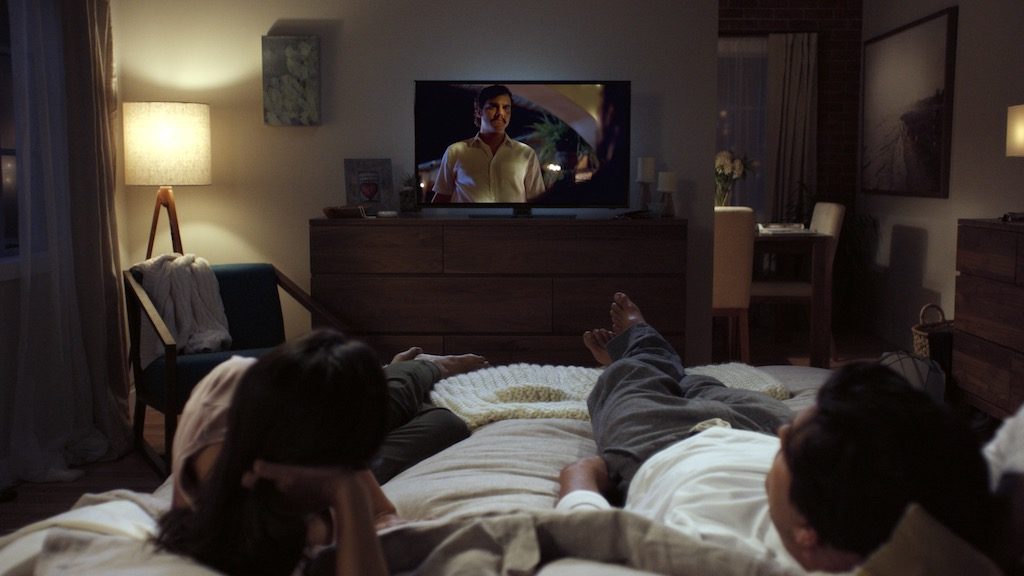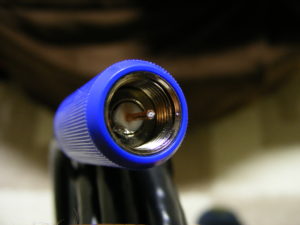We took a long and winding road to cutting the cord. I was a child growing up in the 1980s when my parents first subscribed to cable TV. I remember the excitement of moving from a few local broadcast channels to a whopping 60 channels. We watched kid oriented shows, old TV shows from the 1950s and 1960s, music videos on MTV, sports on ESPN, and even full length movies, completely uninterrupted on HBO. I was a kid, so I didn’t really know how much it cost. Cable TV was, to use an 80s term, totally rad!
About fifteen years later, I moved into an apartment. It was completely natural to subscribe to cable TV. It was how almost everyone I knew watched TV shows and sports. I was paying the bills now, but the cost was low enough that it wasn’t really an issue.
Satellite Television
Shortly after getting married and buying our first home, we switched from our unreliable cable company to satellite television, specifically DirecTV. We received more channels, more reliable service, and a clearer, crisper picture than cable. Watching TV was exciting again.
It was 2001, and TV was still mostly a scheduled event. You either sat down when the show was on, or you recorded it on a VHS tape to watch it later. Setting the VCR to record a show was both inconvenient and unreliable. When something went wrong, the VCR wouldn’t record what you wanted, and you would never be able to watch your show.
Tivo To The Rescue
A DirecTV Tivo receiver was our next step. It brought all the ease of use and reliability of the established Tivo service to DirecTV. All the excitement of television was back once again! As long as we set the show to record (a few presses on the remote control buttons), we could watch shows when we were ready.
DirecTV eventually moved away from Tivo to their own DVR software, but the experience remained good. We almost never had problems that resulted in missed shows, and setting a TV show or series to record was easy. My kids have been fortunate growing up in a home where the shows they wanted to see were likely already saved on the DVR, so they could watch nearly anything on demand.
Cost Increases and Value
A few years ago, I noticed that I could page through the entire channel guide and find nothing that I wanted to watch. If I didn’t already have something saved on the DVR to watch, I could either watch something I didn’t care about, or get up and do something else. I usually chose the latter.
At the same time, the cost of satellite TV and cable TV was regularly increasing. I cut programming and received discounts to compensate, but additional price increases offset the cuts and discounts. Around October of 2014, the combination of decreasing entertainment value and increasing costs started us on a path to cutting the cord.
Amazon Prime
We already subscribed to Amazon Prime for the shipping benefits, so using Amazon Prime Video (which is included in the Amazon Prime cost) to test the viability of streaming TV in our household was an obvious first step. When Amazon made their FireTV Stick available for just $20 in November of 2014, we jumped on the offer.
It turned out that the entire family enjoyed watching shows on the FireTV Stick. We received entertainment on demand without any worry about setting a VCR or DVR. During this time we only watched shows that were available free for Amazon Prime subscribers. A few months later we started the next phase of the streaming experiment…

Enter Netflix
I was familiar with Netflix for years, and I’ll admit that our family was extremely late to the Netflix service. Once we started with Netflix, there was no going back. In just a couple months, watching a show for my kids meant watching Netflix, sometimes Amazon Prime, and definitely not DirecTV. As our kids spent less and less time watching DirecTV, my wife and I determined that they wouldn’t even miss it if we cancelled the service. Our plan was to transition to exclusively using streaming services and DVD/Blu-Ray as our television entertainment sources. It was finally time to cut the cord.
Cutting the Cord
In March of 2016, we cancelled DirecTV, took the hit of a $100 early termination fee (which was better than paying $120+ per month for another six months of service we weren’t really using), and transitioned to streaming services. We added Hulu to catch a few of our favorite broadcast shows and gain additional options. Overall, we are saving nearly $90 per month (over $1,000 per year) and haven’t missed satellite TV at all. There’s no contract with any of the streaming services, so we can turn them off for a few months if we want or need to for financial reasons.
There are many ways to receive streaming content into your home. None of these require long term contracts, so you can simply subscribe to the services that provide the shows you want to watch.
- Netflix, Hulu, Amazon Prime, CBS All Access, and HBO Now – The biggest providers of streaming services in the United States. They offer a combination of network/cable TV shows, movies, and original shows exclusive to each service. Each charges a monthly fee.
- Sling TV and Sony Vue – Two services that offer live streaming of cable and broadcast networks for a monthly fee. This is basically the same as cable or satellite, except that it arrives through your internet connection. AT&T DirecTV is expected to offer a similar service soon.
- iTunes, Amazon, and Google Play – The three major sources for purchase or rental of digital movies and TV shows. If you can’t get it on Netflix, Hulu, or Amazon Prime, then maybe you can buy or rent a digital copy.
- Redbox and Retail Stores – Renting a DVD or Blu-Ray from Redbox or buying from a retail store is still an option if you have a player connected to your TV.
Cutting the cord means changing how you think about TV. In the past, TV was about watching a show at a specific time on a specific channel. By cutting the cord, you flip that around. You watch what you want, when you’re ready to watch it. In my opinion, you must have this mindset. I consider our cord cutting experience to be a complete success.
